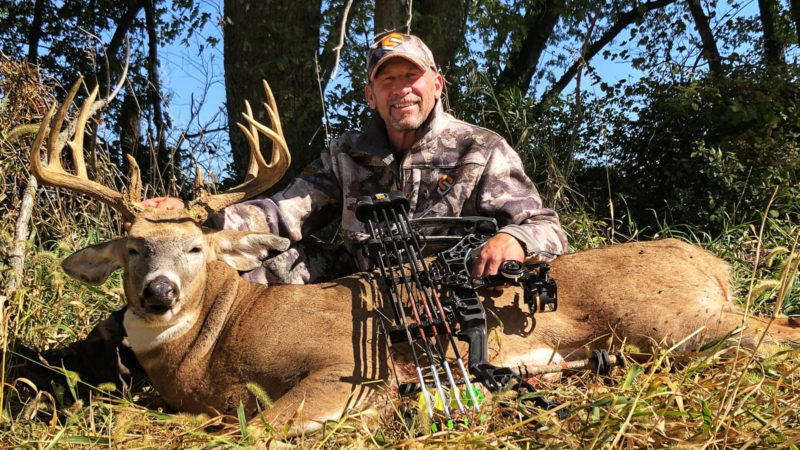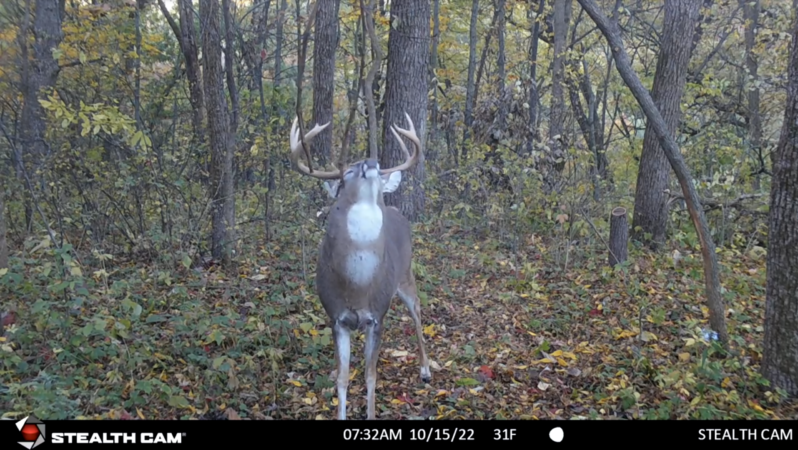If you took a poll of one thousand bowhunters about their favorite time to be in the woods, my guess is the first week of October would be low on the list for hunters in states with October 1st archery openers. Overwhelming answers would likely include late October and November. The first week of October is what many believe to be the beginning of the October lull. For other hunters, the first week in October is their only chance all year to catch an unpressured buck on a pattern in states like Iowa, Pennsylvania, and Michigan.
Killing a buck at any time of year should be celebrated but if you’re killing bucks in early October, you’re doing something special. The journey to killing a buck during the first week of October begins by finding areas of vulnerability in a buck’s daily pattern. You also need to be tuned in to changing food sources and weather patterns. Additionally, you need to be able to hunt on a moment’s notice after weather events so you can maximize deer movement opportunities. Here’s how you can kill an early October buck this year.

Daylight Movers
If you have a buck moving in daylight during early October, you need to drop everything and go after him, even if you don’t have a clear read on why he is moving so well. The point is, he is moving and this is the time to catch up with him. Patterns change weekly leading up the rut and if you have the opportunity to chase a buck that is consistently showing in daylight, go get him.
Don’t rely solely on trail camera data during the first week of October, but trail cameras can tell you an awful lot. My thinking is if a deer is showing a lot on camera, then he is really moving and susceptible to slipping up right in front of your tree. A trail camera only provides a small snippet of what is going on in the woods. So, if a buck is showing in daylight on trail camera, now is the time to be aggressive because you know he is also moving throughout daylight in other locations too.

Hunting Fronts, Calculated Shots
Evidence of a buck moving in daylight trumps everything, but an early October cold front is a can’t miss event that will greatly increase your chances of killing an early October slammer. If you want to kill a buck during the first week in October, you have to hunt the first full day after a front comes through. Do not discount hunting an early season morning during this time of year either. During the first major front, deer will likely be on their feet later into the morning hours.
Hunting a “front” doesn’t only mean hunting a cold front. Any drastic change in weather would qualify and can be the ticket to landing your dream buck. You might be sitting at work on a Tuesday with a rain event ending by 3:00pm. If you have access to hunt close to home, make plans to be in the timber because deer will be moving.

Research studies argue whether cold fronts and high barometric pressure get deer moving, but my own trail camera data strongly suggests cold fronts get deer on their feet earlier in the day and gets them moving further. After years of viewing thousands and thousands of trail camera photos, I trust my own data.
If you want to fall under the category of a patient hunter in early October, only hunt the fringes of a buck’s movement patterns, or only hunt the cold fronts. If you’re only hunting the weather fronts, this could mean you only get out once or twice during a week’s time. It could be good enough though. Throughout the entire month of October, you may only get five days that have a drop in temperature and would fall under the cold front variety. Be in stand on good weather days and you increase your chances.
Be in Tune with Food
Rapidly changing food sources throughout the month of October saves a lot of deer from being killed. I can’t think of a month where it’s more difficult to be in tune with a deer’s pallet. Corn is drying out and becoming tasty, soybeans are yellowing, acorns are falling, and browse is drying out and less attractive than it was just ten days prior.
This is a deep dive for another day, but after running over twenty cameras on a 115 acre piece of land last year with very little hunting pressure from neighbors, I can attest to the fact that it seems like movement can come to a screeching halt during early and mid-October. Rather than deer movement coming to a standstill, it’s more likely my trail cameras weren’t in tune with where deer were bedding and feeding.
If a white oak or other palatable acorns are dropping, they will walk right through your lush food plot to find them. To kill a buck in the first week of October, you need to be completely in sync with the rapidly changing food sources and be able to adapt quickly. Hunting over a prime food source during a well-planned hang and hunt on a cool front can be deadly.

Find Land Close to Home
In order to capitalize on good buck movement during the first week of October, you need to be able to hunt on the drop of a hat, or take a vacation day. Yes, take a vacation day in early October. This reiterates my earlier statement that if you have a buck moving well, you have to hunt as soon as possible or his pattern will change and you’ll miss out.
Last season, I had a great 4.5 year old ten pointer moving consistently from late September through the first week of October. Looking back, I should’ve taken a vacation day and made a 3-day weekend trip to go after him. I did see him a few weeks later just out of archery range, but had I taken a long weekend and given myself more opportunities, he might be on my wall right now.
But lets be honest, most of us won’t take a vacation day to chase a buck during the first week of October. Instead, its critical you find land to hunt close to where you live so you can sneak out after work for a few hours. Knock on doors, offer help to landowners, do whatever you need to do so you can hunt close to home. You need access to good land close to home if you’re going to drop bucks during the first week of October.

 By
By 



